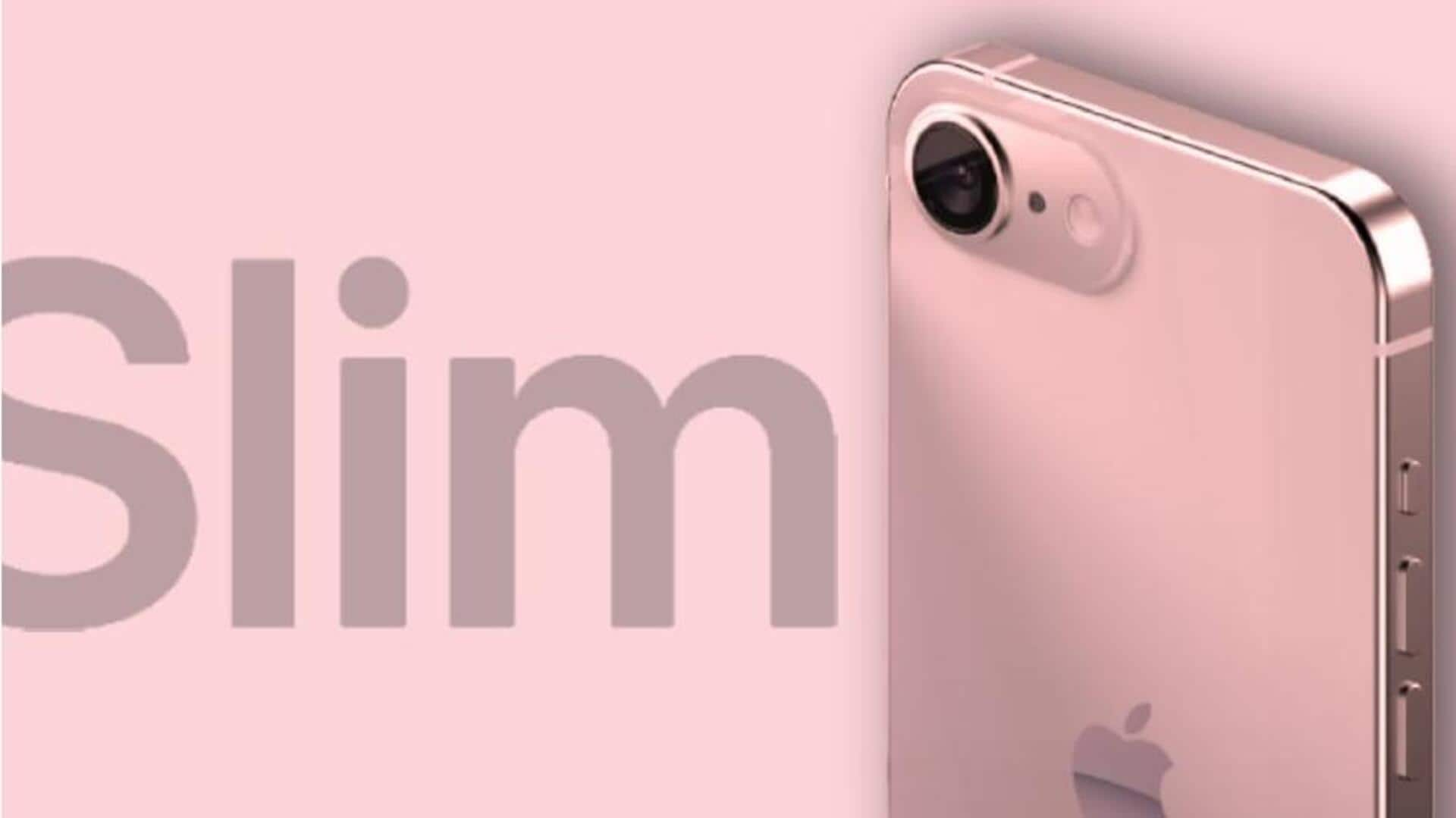Ultra-thin design, single camera: Rumor details 'iPhone 17 Slim' variant
What's the story
Apple's next-generation iPhone 17 series will feature an ultra-thin model, according to renowned analyst Ming-Chi Kuo.
Expected to debut in the second half of 2025, this innovative model will prioritize aesthetics and physical feel over raw hardware power.
The slim design will be complemented by a titanium-aluminium frame. The handset is said to be powered by the yet-to-be-announced A19 chip.
Specifications
iPhone 17 Slim: Screen size, resolution and chip details
The ultra-thin iPhone 17 is expected to feature a screen size of approximately 6.6-inch with a resolution of around 2,740 x 1,260 pixels.
It will be powered by the A19 chip, while higher-end models in the series may utilize the more advanced A19 Pro chip.
Despite its slim form factor, it will maintain the familiar Dynamic Island area consistent with current iPhone designs.
Hardware
iPhone 17 Slim: Frame material and connectivity features
The new iPhone 17 Slim is set to feature a metal frame made from a titanium-aluminium alloy, marking a departure from the higher titanium content found in current Pro and Pro Max models.
Other variants of the iPhone 17 series are expected to continue using aluminium frames.
The device's connectivity will be enhanced with Apple's in-house 5G chip, promising improved performance.
Features
iPhone 17 Slim: Camera and design changes
In a departure from recent trends, the ultra-thin iPhone 17 is expected to come equipped with a single rear camera, emphasizing design simplicity over camera versatility.
Rumors suggest that Apple will discontinue the "Plus" variants and might replace it with a new 'iPhone 17 Slim' model.
The main selling point of this all-new iPhone model will be its design, rather than its specs.
Upgrades
iPhone 17 Slim: Enhanced front camera and scratch-resistant glass
The outer glass on the iPhone 17 is set to have a "super-hard anti-reflective layer," speculated to be more scratch-resistant.
Apple might enhance the Dynamic Island design with a significant upgrade to the front-facing camera, bumping up the resolution to 24MP from the current 12MP.
The cameras could be relocated from the top-left corner of the iPhone to the top center, resulting in a design similar to the upcoming Google Pixel 9 range.
